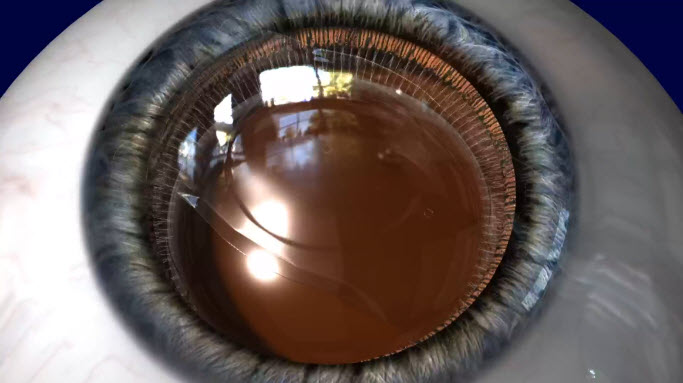Imagine a world where you could seamlessly transition between reading a book, working on your computer, and enjoying the beauty of the outdoors without constantly fumbling for your reading glasses. Thanks to the remarkable advancements in multifocal lens technology, this dream has become a reality for millions struggling with presbyopia.
Understanding Presbyopia and its Impact
Presbyopia, often referred to as age-related farsightedness, is a common vision condition that typically becomes noticeable after the age of 40. It occurs when the natural lens of the eye loses its flexibility, making it challenging to focus on objects up close. This natural part of aging can lead to eye strain, headaches, and the need for reading glasses or bifocals.
The Evolution of Multifocal Lenses
Multifocal lenses have revolutionized the way we address presbyopia. These lenses are designed with multiple prescriptions in a single lens, allowing individuals to see clearly at varying distances. The journey of multifocal lens technology is marked by several significant advancements:

1. Bifocal Lenses: The Foundation
Bifocal lenses, one of the earliest forms of multifocal technology, offered a clear distinction between the upper part for distance vision and the lower segment for near vision. While effective, they lacked a smooth transition and often resulted in image jump. Further advancement in technologies led to diffractive, refractive and segmental designs of bifocal lens.
2. Trifocal Lenses: Adding an Intermediate Zone
Trifocal lenses introduced an intermediate vision zone, addressing the needs of those who use digital devices frequently. This advancement significantly improved the quality of life for individuals with presbyopia.
3. The Benefits of Modern Multifocal Lenses
With these advancements, modern multifocal lenses offer a plethora of benefits:
• Enhanced Visual Range: Multifocal lenses cover a range of distances, from far to intermediate to near, offering a comprehensive solution for daily tasks.
• Spectacle independence: Individuals can reduce their dependence on reading glasses, enjoying greater freedom and convenience.
Overcoming Challenges
While multifocal lenses have come a long way, there are still challenges to address:
• Adaptation Period: Some individuals may require a brief adaptation period to get used to the new way of seeing through multifocal lenses.
• Night Glare: There may be some glare and halos at night, affecting night time driving in the initial few months until the get neuroadapted when the patients ceases to see them.

The Future of Multifocal Lens Technology
The journey of multifocal lens technology is far from over. Researchers are exploring innovations such as accommodative lenses, which mimic the natural focusing ability of young eyes, and light-adjustable lenses, which can be fine-tuned even after they are implanted.
As we move forward, one can only anticipate further breakthroughs that will continue to enhance the lives of those dealing with presbyopia.
Conclusion
In a world where technological advancements are reshaping our lives, multifocal lens technology has emerged as a beacon of hope for individuals facing the challenges of presbyopia. The seamless integration of various prescriptions into a single lens is nothing short of revolutionary. With enhanced visual comfort and reduced dependence on reading glasses, multifocal lenses are not just correcting vision-they’re restoring the joy of experiencing the world with clarity.
Frequently Asked Questions – Multifocal Lens Technology
Who can benefit from multifocal lenses?
Multifocal lenses are designed for individuals with presbyopia, which commonly affects people over the age of 45.
Are multifocal lenses suitable for everyone?
While multifocal lenses are highly effective, they may not be suitable for individuals with certain eye conditions. Consult an eye care professional for personalized advice.
Can I drive at night with multifocal lenses?
While modern multifocal lenses aim to minimize night glare, some individuals may experience mild halos and glare for initial few months.
How long does it take to adjust to multifocal lenses?
Most individuals adapt to multifocal lenses within a couple of weeks. However, the adjustment period may vary based on individual preferences and visual needs.
Are there alternatives to multifocal lenses?
Yes, alternatives include monovision (one eye corrected for distance, the other for near) with monofocal or extended depth of focus lenses. Consult an eye care specialist to determine the best option for you.
